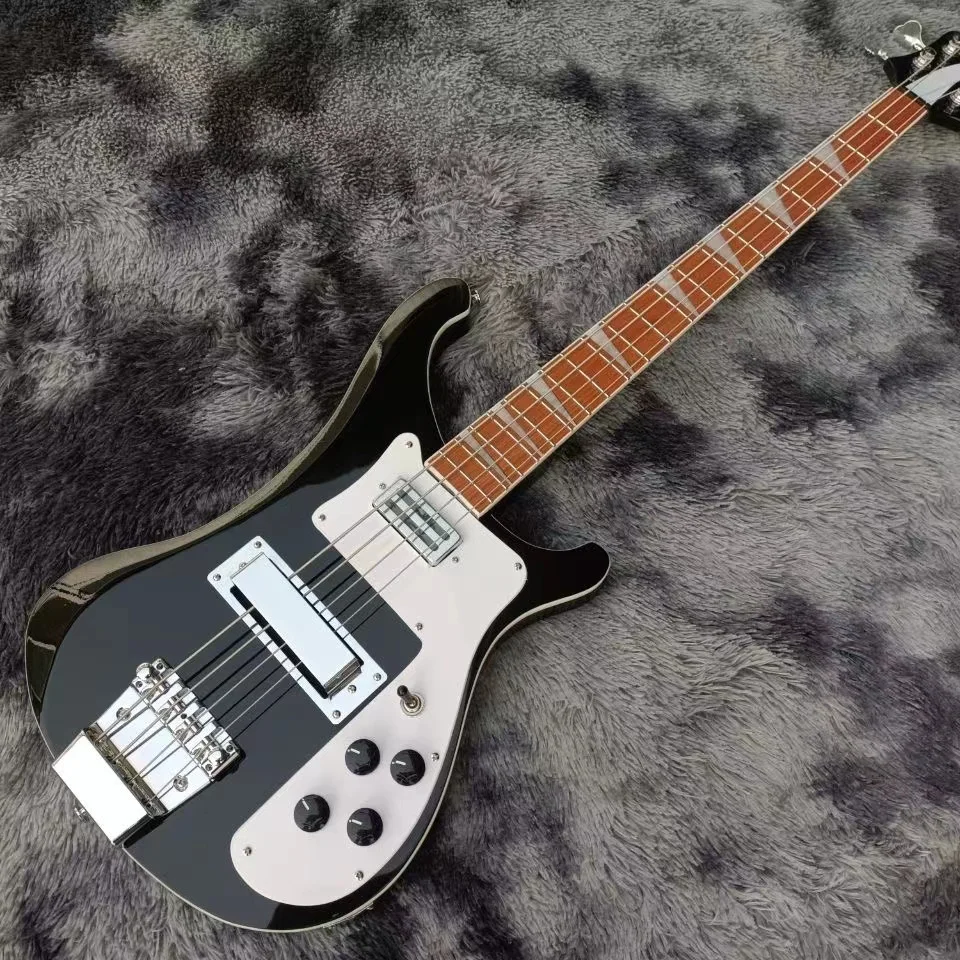When it comes to selecting a sea bass guitar, factors such as playability, comfort, and weight are crucial considerations. Rickenbacker basses have gained a repute for their unique sound and typical design. However, it’s also operative to evaluate the ergonomics and weight of Rickenbacker basses to ensure a wide playing experience. In this article, we wish explore the ergonomics and weight of Rickenbacker basses, helping you empathize their impact on your playing and aiding you in making an knowledgeable decision when choosing the correct instrument for your needs.
Contents
Body form and Contouring:
Rickenbacker basses are known for their iconic body shapes, with models care the 4001 and 4003 featuring a double-cutaway design. The body form and contouring of a bass guitar can have a significant bear on on its ergonomics. Rickenbacker basses generally volunteer excellent access to the upper berth frets due to their double-cutaway design, allowing for more wide and effortless playing in higher registers. The contoured body shapes also contribute to a more ergonomic playing see by providing a cancel resting put together for the player’s forearm and belly.
Neck Profile and clavier Radius:
The neck profile and fingerboard spoke of a sea bass guitar greatly influence how comfortable it is to play. Rickenbacker basses generally have a slim make out visibility and a fingerboard with a relatively flatcar radius. This design allows for faster and easier fretting, as well as smoother thread bending. The slim make out profile also reduces the strain on the player’s hand and wrist during outstretched performin sessions. However, it’s important to note that neck profiles and fingerboard radii can vary crossways different models, so it’s material to try come out of the closet various Rickenbacker basses to see the one that trump suits your playing style and comfort preferences.
Weight Considerations:
The weight of a bass guitar is an essential factor to consider, particularly for long gigs or sprawly studio sessions. Rickenbacker basses are generally made of solid woods, so much as maple, which can contribute to their weight. patc the angle can add to the sustain and resonance of the instrument, it can also put across challenges for players who prefer a ignitor instrument. It’s important to note that Rickenbacker basses undefined in different models and variations, and some may be lighter than others. Trying out unusual models and determination a balance ‘tween weight and craved tonal characteristics is crucial to finding the correct Rickenbacker bass for you.
Strap Buttons and Balance:
The placement of strap buttons on a bass guitar affects its balance when played standing up. Rickenbacker basses typically have a trounc button on the upper berth horn of the body and another on the back of the body near the neck joint. This locating helps to distribute the weight of the instrument evenly, ensuring improve balance and reducing try on the player’s shoulder and back. However, it’s probatory to find the right lash duration and position that suits your playacting title and body type to achieve optimal comfort and balance.
Considerations for Ergonomics and Weight:
When evaluating the ergonomics and slant of Rickenbacker basses, consider the following factors:
Playing Style: Different playacting styles may require unusual ergonomic considerations. If you play more aggressively, you may prefer a bass with a more essential body for added have and stability. If you play more complex and fast-paced styles, a lighter instrument with a slimmer neck profile may be more suitable.
Physical Considerations: Your physical attributes, so much as pass size up and body frame, should also be taken into account. Smaller hands may find a slimmer neck profile more comfortable, while a lighter instrument may be more suitable for players with back or shoulder joint issues.
Sound and Tonal Preferences: It’s meaningful to walk out a balance ‘tween ergonomics and wanted tonal characteristics. While a heavier sea bass may volunteer more sustain, view whether the added weight will hinder your acting comfort over extended periods. Finding the correct balance that suits both your playacting style and tonal preferences is crucial.
Conclusion:
Evaluating the ergonomics and slant of Rickenbacker basses is essential for determination a comfortable and pleasurable playing experience. The body shape, contouring, make out profile, fingerboard radius, weight, and balance entirely contribute to the boilersuit bioengineering of the instrument. It’s portentous to try come out different Rickenbacker bass models, considering your playing style, physical attributes, and tonic preferences, to find the unity that offers the best combination of soothe and desired sound. By understanding the ergonomics and weight of Rickenbacker basses, you can choose an instrument that enhances your playing experience, allowing you to focus on on your music and strive your full sea bass playing potential.
